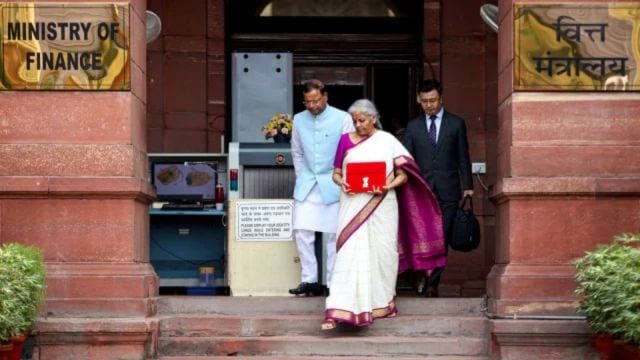The Union government’s decision to revise the classification criteria for micro, small, and medium enterprises (MSMEs), effective April 1, has created unease among some representative bodies, who argue the revision will have an “adverse impact” on micro and small firms.

In a letter to the Ministry of MSME on March 12, Laghu Udyog Bharati — a Rashtriya Swayamsevak Sangh (RSS)-affiliated body for micro and small enterprises — flagged that with the revision, erstwhile medium firms will “corner” benefits meant for smaller firms, The Indian Express has learnt.
In India, micro and small enterprises benefit from a 25 per cent public procurement quota and MSMEs overall are eligible for priority sector lending, with a sub-target for micro firms.
“Laghu Udyog Bharati foresee the adverse impact of above enhancements on micro and small-scale units who constitute about 99.99 per cent of MSMEs whereas handful of medium level units as they are less than 0.01 per cent are expected to corner such benefits,” the letter to SCL Das, MSME Secretary, said. “Hence, revision of classification of MSMEs at this stage will not serve any useful purpose and it is requested to restore the existing criteria for the time being,” it added.
The MSME ministry did not respond to requests for comment.
What is the revised criteria for MSME classification
Prior to April 1, micro enterprises were defined as those with investments up to Rs 1 crore and annual turnover up to Rs 5 crore. The threshold for small enterprises was Rs 10 crore in investment and Rs 50 crore in turnover, while for medium enterprises, it was Rs 50 crore in investment and Rs 250 crore in turnover.
Story continues below this ad
In her Budget speech, Sitharaman said the investment and turnover limits will be enhanced to give MSMEs “the confidence to grow and generate employment for our youth”.
“To help them achieve higher efficiencies of scale, technological upgradation and better access to capital, the investment and turnover limits for classification of all MSMEs will be enhanced to 2.5 and 2 times, respectively,” she had said.
The most recent criteria revision prior to the latest change was made in 2020.
Pandemic effect
In its letter, Laghu Udyog Bharati argued that due to the Covid-19 pandemic in 2020 and 2021, MSMEs were adversely impacted and that their recovery would be hard to assess as of now.
Story continues below this ad
“Therefore, it would be too early to enhance the level of Investment to 2.5 times and to double the turnover level for various categories of MSMEs and no tangible benefits can be achieved by simply revising their classification,” the letter said.
“Presumably, it would not be possible for the Govt. to properly assess the impact of revision of classification of MSMEs undertaken during the year 2020. Most probably, no benefit could be attributed to MSMEs due to change in classification criteria made earlier,” it also said, flagging the absence of fresh data on MSMEs since the National Sample Survey in 2015-16.
However, Anil Bhardwaj, secretary general of Federation of Indian Micro and Small & Medium Enterprises (FISME), welcomed the enhancement on the grounds that periodic revision of investment and turnover limits is important, especially when inflation and geopolitical events are raising raw material costs and, in turn, the turnover of a firm.
The ‘missing middle’ and credit woes of micro, small enterprises
Another reason cited for the revision is to promote vertical integration of firms as opposed to horizontal growth, which takes a toll on productivity.
Story continues below this ad
“In India, medium-sized enterprises are very few. There’s a ‘missing middle’ because firms prefer to stay small. One reason is that the moment they get out of the small category, they lose certain benefits. So, instead of vertical growth, many expand horizontally — setting up multiple Rs 50 crore firms instead of a single Rs 200 crore vertically integrated company. This raises costs because of more regulatory requirements, more space being used, more security guards — resources that don’t add to productivity,” Bhardwaj said.
A third reason for the revision, according to Bhardwaj, was to significantly raise the investment limit, which will allow foreign investors exploring joint ventures in India to invest larger amounts while still qualifying as MSMEs to benefit from priority sector lending.
In its letter, Laghu Udyog Bharati highlighted that despite MSMEs being eligible for priority sector lending, of which around 8 per cent is set aside for micro enterprises, most credit flows towards medium enterprises.
“It is our experience that banking channels, be it public sector or a private Bank generally avoid micro and small units for their limited credit requirements while prefer[ring] to deal with bigger units in granting loans and other credit facilities etc. as they can achieve their target by financing a limited number of clients. This fact has been brought to the knowledge of Ministry of Finance as well as RBI on a number of occasions but without much result,” the letter said.
Story continues below this ad
Laghu Udyog Bharati also requested to create a separate department for micro and small enterprises, arguing that “there is an urgent need to protect such vulnerable section of the society as they can’t compete with medium enterprises in any way”.

































